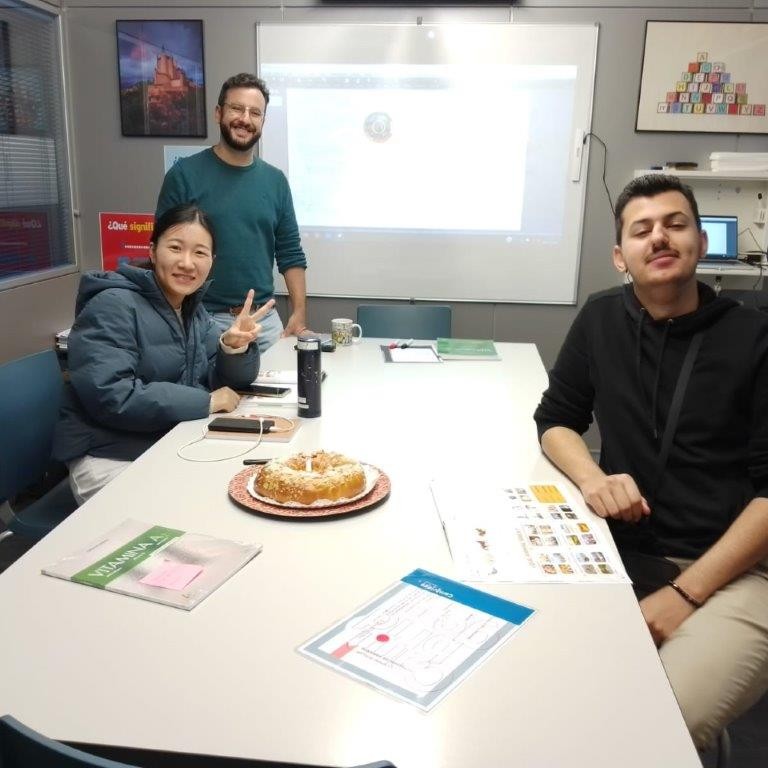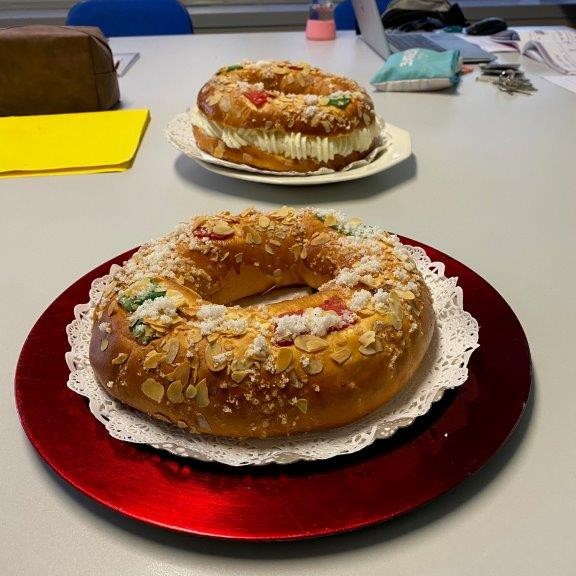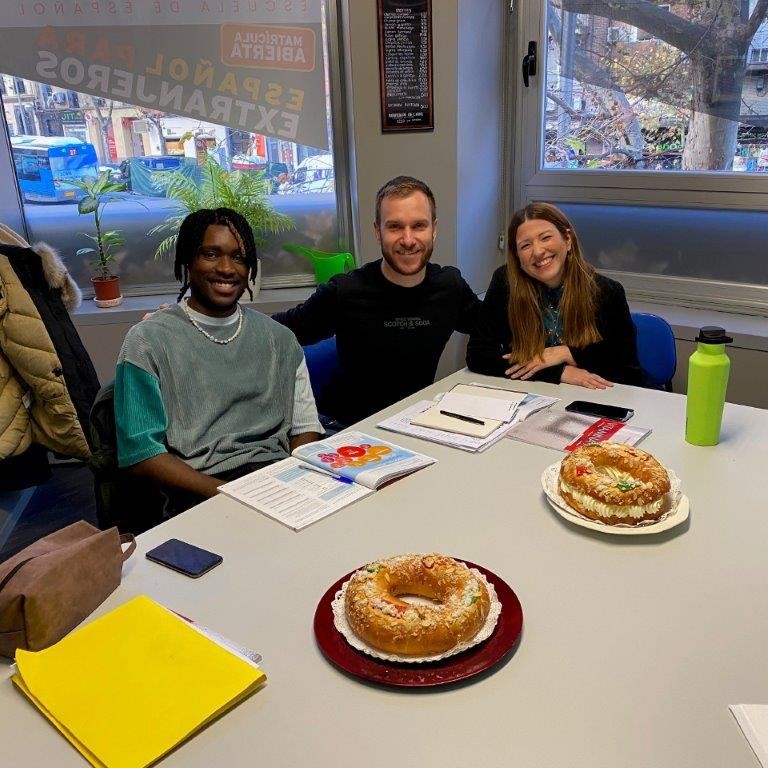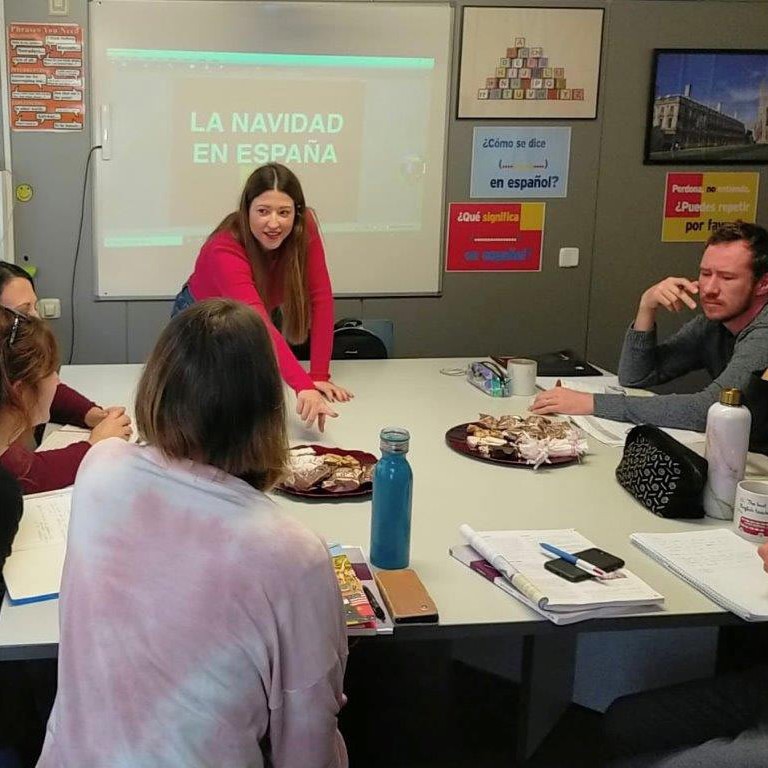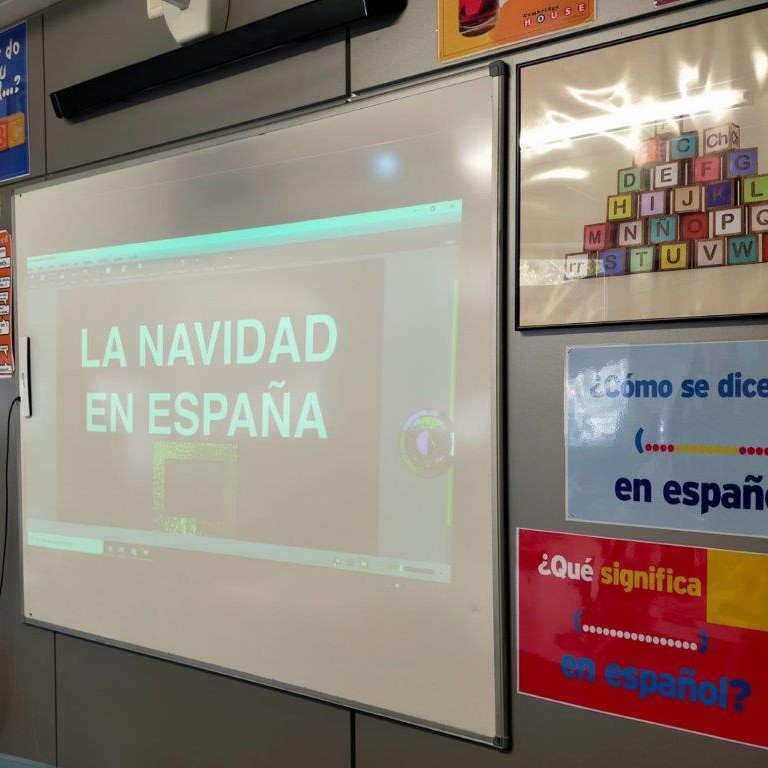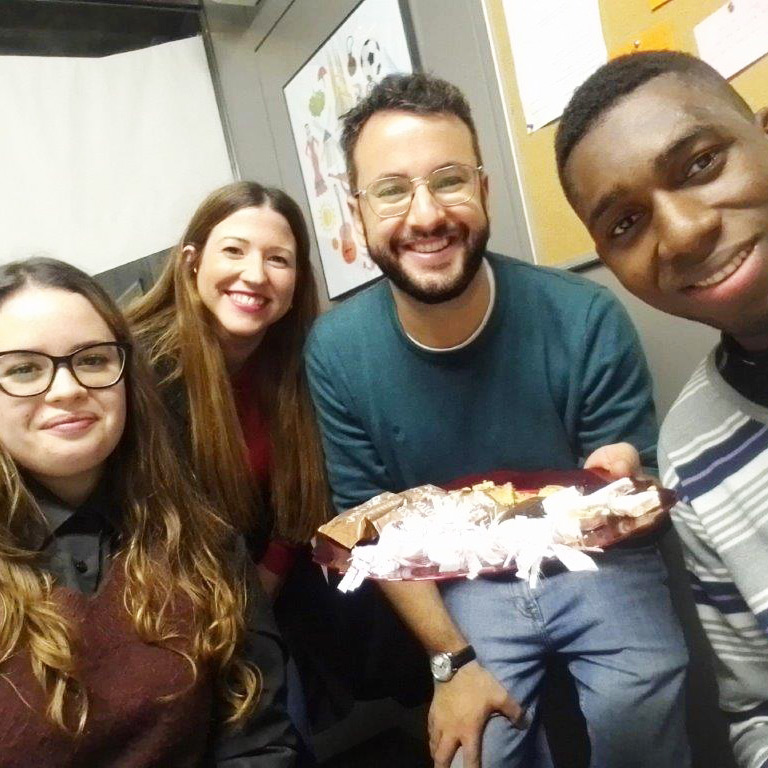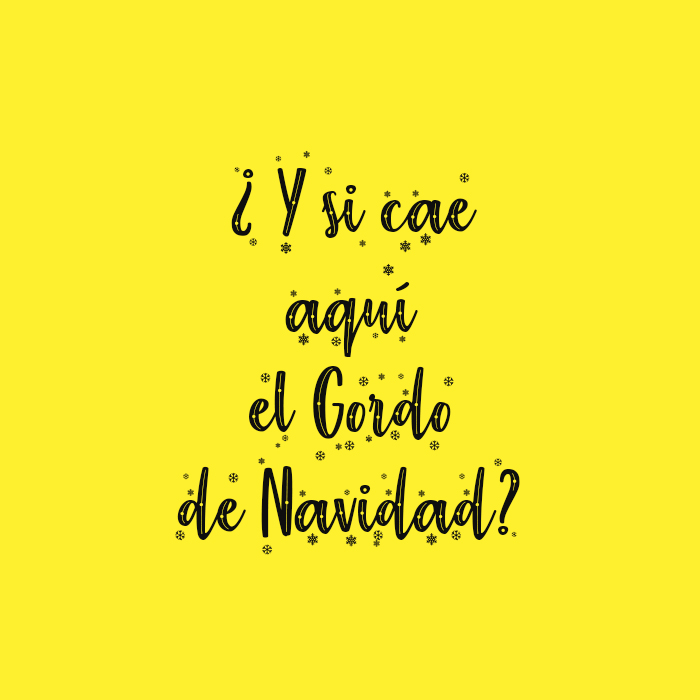El Museo Nacional Centro de Arte Reina Sofía
This is a custom heading element.
El Museo Nacional Centro de Arte Reina Sofía es uno de los espacios artísticos más conocidos y visitados de Madrid. Con las clases de español que ofrece Hablamos, además de aprender el idioma, podrás visitar y conocer este museo imprescindible. Visitando este museo entenderemos la vida social y artística de España a comienzos del siglo XX a través de las corrientes artísticas del expresionismo, el surrealismo y el cubismo. Analizaremos este periodo histórico de grandes cambios y ambivalencias realizando un recorrido por este museo, sirviéndonos de una selección de obras de arte cuyo recorrido acabará en el Guernica. Sobre todo, con las sesiones culturales que incluyen las clases de español de Hablamos aprenderás y practicarás el español de una manera original y diferente.
Como adelanto, hoy queríamos presentarte un pequeño resumen de lo que significa la modernidad y las vanguardias en España a través de tres obras de diferentes artistas que podrás encontrar en este gran museo: La tertulia del Café del Pombo de Joaquín Gutierrez Solana, El Gran Masturbador de Salvador Dalí y El Guernica de Pablo Picasso. Antes de comenzar a hablar de estas obras clave, explicaremos brevemente qué son las vanguardias y de dónde vienen.
El nombre de Literaturas de Vanguardia fue acuñado durante la Primera Guerra Mundial para designar una serie de inquietudes artísticas que se sitúan en la “avanzadilla” cultural del momento. El vanguardismo significó uno de los momentos de mayor unidad entre los artistas europeos que se proyectaron hacia la construcción de una nueva cultura y, por tanto, de una nueva sociedad. Pero el vanguardismo no fue ni mucho menos una tendencia unitaria sino que estuvo formado por una gran cantidad de movimientos, cada uno de ellos con peculiaridades, intenciones y técnicas propias. Lo que tuvieron en común fue el deseo de crear un arte radicalmente nuevo y que rompiese definitivamente con el realismo. La fractura que provocaron los movimientos de vanguardia con respecto al arte anterior estaba íntimamente ligada a los profundos cambios políticos y sociales producidos con la llegada del siglo XX. Los movimientos de vanguardia fueron fundamentalmente europeos y buena parte de ellos tuvieron raíz francesa, concretamente en París.
La tertulia del Café de Pombo, 1920, es la obra más emblemática de José Gutiérrez Solana
El autor fue un gran aficionado a las reuniones de intelectuales en cafés, frecuentes en el Madrid del primer tercio del siglo XX. Los cafés más conocidos entre los madrileños fueron: el Nuevo Levante, el Universal, el Candelas y, sobre todo, el que da título al cuadro, el Pombo. Solana retrata a algunos de los tertulianos más habituales y de esta forma nos traslada a un momento singular de la vida intelectual española de los años veinte y da a conocer los rostros de algunos de sus protagonistas. Actualmente, el cuadro se muestra al público en la segunda planta del museo dedicada a la irrupción del siglo XX, más concretamente en la sala 201, titulada Modernidad. Progreso y decadentismo.
El Antiguo Café y Botillería de Pombo, que sirvió de escenario para la pintura de Solana, inaugurado a comienzos del siglo XIX, se encontraba cerca de la Puerta del Sol, en el número 4 de la calle de Carretas, zona de librerías y tiendas de ortopedia. Es muy posible que fuese una botillería que se transformase poco a poco, por influjo de las modas, en un café. Autores de finales de siglo XIX mencionan que es una de las botillerías más antiguas de Madrid. Parece ser que era un local modesto y sombrío afamado por su leche merengada y el sorbete de arroz. Fue uno de los más conocidos locales de tertulia del Madrid del primer tercio del siglo XX.Tras la Guerra Civil, el Café de Pombo se convirtió en un lugar sórdido y prostibulario de la noche madrileña, pues las prostitutas del cercano Café de Zaragoza (al que el humor madrileño denominó café de la sífilis) daban un aspecto muy diferente del que tuvo en los años veinte. La botillería cerró definitivamente en 1942.
El Gran Masturbador de Salvador Dalí
El Gran Masturbador de Salvador Dalí, pintado en 1929, está situado en la sala 205 del museo. Símbolo por excelencia de las obsesiones sexuales del artista, Salvador Dalí pinta este lienzo al final del verano de 1929, tras pasar varios días con Gala. Se sabe que ella había decidido permanecer con él en Cadaqués en lugar de viajar a París con el poeta Paul Éluard (que era su esposo por aquel entonces). El Gran Masturbador es un cuadro eminentemente autobiográfico: la gran cabeza del masturbador es una de las personificaciones del propio artista, que aparece en la pintura protagonizando varias escenas simultáneas, como reflejo de la transformación anímica y erótica que Dalí acababa de experimentar a causa de la aparición de Gala en su vida. Por otra parte, en esta inquietante composición, las fantasías dalinianas alcanzan su cénit, en especial por lo que respecta al motivo del saltamontes que succiona el cuerpo de la gran figura metamorfoseada, ya que, este insecto le aterrorizó siempre de forma especial, incluso ya desde los días de su infancia.
El Guernica de Pablo Picasso
El cuadro más celebre del siglo XX: El Guernica fue adquirido a Pablo Picasso por el Estado español en 1937. Debido al estallido de la Segunda Guerra Mundial, el artista decidió que la pintura quedara bajo la custodia del Museum of Modern Art de Nueva York hasta que finalizara el conflicto bélico. La obra finalmente regresó a nuestro país en el año 1981, una vez restablecidas las libertades democráticas.
Reflejo fiel de una época y de unas dramáticas circunstancias, el Guernica nació para formar parte del Pabellón Español en la Exposición Internacional de París de 1937. El motivo que impulsó a Pablo Picasso a realizar la escena representada en esta gran pintura fue la noticia de los bombardeos efectuados por la aviación alemana sobre la villa vasca que da nombre a la obra. Concebido como un gigantesco cartel, el gran lienzo es el testimonio del horror que supuso la Guerra Civil española, así como la premonición de lo que iba a suceder en la Segunda Guerra Mundial. La sobriedad cromática y la intensidad de todos y cada uno de los motivos determinan el extremado carácter trágico de la escena, que se convertirá en el emblema de los desgarradores conflictos de la sociedad de nuestros días. El Guernica está considerado como unas de las obras de arte más representativas del siglo XX.
Esperamos que hayas disfrutado con esta pequeña presentación del Museo Nacional Centro de Arte Reina Sofía y pincelada de las vanguardias en España. Recuerda que podrás aprender español de una manera sencilla y enriquecedora con Hablamos y las actividades culturales celebradas cada viernes.
¡Te esperamos!
Hablamos - full-on Spanish!
El invierno - ¡Qué maravilla!
This is a custom heading element.
Right now here in Madrid hace mucho frío (it’s very cold). But how can that be? Well, contrary to popular belief, no siempre hace calor y sol (it’s not always hot and sunny) in Spain! De hecho (in fact), Spain has a very varied climate – ranging from colder and wetter in the north, to hotter and drier in the south. In las islas canarias (the Canary Islands), you’ll find that the temperature (temperature) is more stable all year at somewhere between 16 and 27 grados (degrees) centigrade.
However, as you’re thinking about coming to Madrid to study Spanish, let’s talk a bit more about things in the capital. Right now, en enero (in January), it’s very usual to have temperatures bajo cero (below zero) at night and also, nieva (it snows). A few years ago we had the worst snowstorm in 50 years which was great fun as you could see people esquiando (skiing) down the main roads! The Madrid region has lots of montañas (mountains) in the north and you can go skiing there several months of the year. Try it when you come here to take a Spanish course!
| Spanish | English |
| El invierno | Winter |
| noviembre | November |
| diciembre | December |
| enero | January |
| Hace (mucho) frío | It’s very cold |
| Hace viento | It’s windy |
| Una tormenta | A storm |
| Llover | To rain |
| Está chispeando | It’s drizzling |
| Nevar | To snow |
| Llevar | To wear |
| Un abrigo | A coat |
| Una bufanda | A scarf |
| Unos guantes | Gloves |
| Unas botas | Boots |
| Un paraguas | An umbrella |
| Esquiar | To ski |
| Hacer senderismo | Go hiking |
| Un muñeco de nieve | A snowman |
Apart from all that wintery vocab, let’s take a look at some frases hechas (set phrases) and refranes (idioms) to do with el tiempo (the weather) and see what they mean.
Llover a cántaros – It’s raining buckets/jugs
I suppose you can already adivinar (guess) what this one means from the literal translation, right? You guessed it – this phrase suggests that it’s raining really heavily. We might say it’s similar to the phrase “it’s chucking it down”. Ejemplo – Ayer estaba lloviendo a cántaros y se inundó parte de la carretera (Yesterday it was chucking it down and part of the main road flooded).
Hacer un frío de perros – It’s dog cold
Another phrase which you can work out from the bad English version. Yes, this one means that it’s bitterly cold or it’s freezing. Often, in Spanish, we add de perros to something which is not very pleasant (poor dogs!). So we can also say hace un tiempo de perros (The weather is really bad) or Juan tenía un humor de perros (Juan was in a terrible mood). Curious, verdad (right)? Ejemplo – Cuando fui a hacer senderismo, hizo un frío de perros y volví a casa después de un par de horas (When I went hiking it was freezing and so I went back home after a couple of hours).
Hasta el 40 de mayo, no te quites el sayo – Don’t take off your jumper until the 40th of May (meaning the 9th of June!)
What a weird little phrase! This is something very madrileño (from Madrid) and so something you’ll hear a lot when you come here to learn Spanish. Nobody literally means you should keep a jumper on until the 9th of June, but it’s referring to the fact that weather here in the capital can be a bit variable (fickle/changeable) right into late primavera (Spring). It’s true that we often get días lluviosos (rainy days) during May and early June, normally it’s also a bit chilly when that happens as well. Ejemplo – Salí de casa en manga corta pero luego empezó a llover y hacer un poco de frío. Bueno, debería haberme acordado del dicho de hasta el 40 de mayo, no te quites el sayo (I left my house in short sleeves but then it started getting a bit cold and rainy. Well, I should have remembered the saying that I shouldn’t take off my jumper until the 40th of May).
Plan de sofá, peli y manta – Sofa, film and blanket time
This one isn’t exactly an idiomatic phrase, but it is something you’ll hear a lot at this time of year when you come to study Spanish here in Madrid. Clearly, as the weather isn’t great, there’ll be lots of days when it’s too cold, rainy etc to bother going out. It is true that, at least in the parts of Spain where the weather is more often good than bad, people have a bit of a tendency to cancelar planes (cancel plans) when there’s rain or other poor weather forecast. This doesn’t generally apply to the north, however, which has a much wetter climate than the rest of the country. So, what do we do on such days? Well, as the phrase suggests, it’s plan de sofa, peli y manta! Get a blanket out, find a good film, and stay on the sofa – ¡ya está! (that’s it!). Ejemplo – El domingo va a llover todo el día así que es tiempo de plan de sofá, peli y manta (It’s going to rain all day on Sunday so it’s just going to be a sofa day with a film and sitting under my blanket).
Ok, so there we’ve given you a few useful tiempo related phrases to use when you’re discussing the weather both with your friends and your classmates in your Spanish lessons. You’ll come across many more such phrases as you learn more of the language, and we’d suggest keeping a note of them so you can remember and use them yourself!
Hablamos - full-on Spanish!
¡Feliz día de Reyes! - Three Kings Day
This is a custom heading element.
Para los españoles, el 6 de enero es el día de los Reyes Magos, el más importante del periodo navideño, ya que es cuando los Reyes Magos entregan todos los regalos a niños y mayores. También es el último día del periodo navideño, lo que significa que todo el mundo tiene que volver al colegio y al trabajo poco después. Pero, ¿por qué el día 6 (y el 5) es la parte clave de la Navidad aquí? Averigüémoslo.
La idea de los Reyes Magos se basa, como muchos de ustedes saben, en la historia bíblica del nacimiento de Jesús. Como nos cuenta la Biblia, el rey Herodes se enteró de la noticia de la llegada de Jesús y envió a un grupo de desconocidos para que descubriesen el lugar del nacimiento y luego le informaran, a fin de poder él también visitarlo. Bueno, en realidad quería matar al pobre niño Jesús, ¡pero esa es otra historia! Los tres llegaron a su destino el 6 de enero, conocido como la Epifanía, por eso lo celebramos en este día. De todas formas, la versión original de los hechos no nombraba a los Reyes Magos, ni mencionaba que fuesen tres.
Escritos añadidos al Nuevo Testamento, pero que no forman parte de la Biblia, nos dieron más detalles sobre los Reyes Magos, y la idea de que fueran tres está vinculada a la Santísima Trinidad, de ahí que también fuesen tres los regalos que los Reyes entregaron a Jesús. Si avanzamos varios siglos, las referencias a los nombres de estos visitantes aparecen en el Auto de los Reyes Magos, un texto teatral del siglo XII clave en la historia de la literatura española. Aquí se hace referencia a Melchor, Gaspar y Baltasar (nombres de los tres Magos), que visitaron al Niño Jesús y le trajeron los famosos regalos oro, incienso y mirra. Sin embargo, la primera mención de los nombres de nuestros Reyes Magos aparece en un famoso mosaico del siglo VI en Italia.
In many parts of the world, Christmas is now coming to an end. The decorations will be being taken down, and all the presents almost forgotten about in a corner somewhere. But not here in Spain! For the Spanish, the 6th of January is el día de los Reyes Magos (Three Kings Day) which is the most important day of the Christmas period as it’s when los Reyes Magos (the Three Kings/Three Wise Men) deliver all the gifts for children and adults to enjoy. It’s also the last day of the Christmas period too, which means everyone has to go back to school and work soon after! But why is the 6th (and the 5th) the key part of Christmas here? Let’s find out.
Where does this all come from?
The idea of los Reyes Magos is, as many of you know, based on the Biblical story of the birth of Jesus. As we learn in the Bible, King Herod learned of the news of Jesus’ arrival and sent a group of unknown number to find the birthplace and then report back to him so he could also visit. Well, really he wanted to kill poor baby Jesus but that’s another story! The three arrived at their destination el 6 de enero (the 6th of January) known as la Epifanía (the Epiphany), therefore that’s why we celebrate on this day. Anyway, the original version of events didn’t name los Reyes Magos, nor did we know there were three of them.
Writings added in addition to the New Testament, but not part of the Bible itself, gave us more detail about los Reyes Magos, and the idea of there being three of them is linked to la Santísima Trinidad (the Holy Trinity) hence there being three gifts which the kings brought to Jesus. Skip forward several hundred years, and references to the names of these visitors appear in the Auto de los Reyes Magos (The Adoration of the Three Kings) which is a theatrical text from el siglo XII (the 12th century) and a key part of the history of Spanish literature. Here we see reference to Melchor, Gaspar, y Baltasar (the names of the Three Kings) who visited baby Jesus and brought the famous gifts of mirra (myrrh), oro (gold) and incienso (frankincense). However, the first ever mention of the names of our Reyes Magos came in a famous mosaíco (mosaic) from el siglo VI (the 6th century) in Italy!
¿Cuándo recibiremos los regalos?
Bien, ahora que ya conoces el origen de la idea de los Reyes Magos, veamos qué ocurre realmente los días 5 y 6 de enero.
Para preparar su viaje por España, y por todos los países que también los celebran, a los Reyes Magos les gusta mostrar a todo el mundo que van llegando durante la cabalgata de los Reyes Magos. Se celebra la noche del 5 de enero y es todo un espectáculo. En Madrid, la cabalgata está protagonizada por multitud de carrozas de vivos colores que recorren las calles de la capital y se retransmite en directo por televisión. Las últimas carrozas son las más especiales, ya que llevan a Melchor, Gaspar y Baltasar ante la multitud que espera verlos. Los ayudantes de los Reyes lanzan caramelos y otros dulces a todos los niños allí presentes, ¡lo que hace que sea aún más emocionante! Por la noche, una vez finalizada la cabalgata, los Reyes Magos van a entregar los regalos que todos han solicitado, para que los desenvuelvan con ilusión a la mañana siguiente.
Existen varias teorías sobre el origen de esta idea, una de las cuales sostiene que la primera cabalgata tuvo lugar en la localidad alicantina de Alcoy en 1866. Sin embargo, Granada, en el sur de España, afirma haber celebrado actos similares en la misma época, mientras que en Barcelona hay constancia de que se organizó una cabalgata en 1855. Lo importante, sin embargo, es que hoy en día se trata de una tradición firmemente arraigada en España y en varios otros países.
When do we get our presents?
Ok, so now you know the origin of the idea of los Reyes Magos, let’s look at what actually happens on the 5th and 6th of January.
To prepare for their trip around Spain, and all the other countries which also celebrate them, los Reyes Magos like to show everyone that they are coming during la cabalgata de los Reyes Magos (the Three Kings Parade). This happens on the evening of el 5 de enero (5th January) and is quite the spectáculo (spectacle). In Madrid, la cabalgata (the parade) features lots of very brightly coloured carrozas (floats) which are driven through the streets of the capital and televised live for everyone to watch on TV. The last few carrozas (floats) are particularly special, as they carry Melchor, Gaspar y Baltasar past the crowds of people waiting to catch a glimpse of them. The Kings’ helpers throw sweets and other candy to all the children watching which makes it even more exciting for them too! After the parade finishes, los Reyes Magos go and deliver everyone’s presents during the night to be eagerly unwrapped in the morning.
There are several theories as to where this idea comes from, one being that the first cabalgata (parade) took place in the Spanish town of Alcoy in Alicante in 1866. However, Granada in the south of Spain claims to have had similar events at the same time, whereas in Barcelona there is some evidence that a cabalgata (parade) had been organised in 1855. What matters though is that nowadays this is a firmly established tradition in Spain and several other countries.
El roscón de Reyes
Además de abrir los regalos, el 6 de enero también se degusta el roscón de Reyes. En realidad no es un roscón como tal, sino más bien una masa dulce redonda parecida al pan con un agujero en el centro. El roscón se decora con frutas confitadas y puede ir con o sin relleno de nata (aunque en los últimos años también se han visto otros rellenos, como chocolate). La tradición es cortar el roscón en trozos y compartirlo con toda la familia. Mientras se come el trozo, hay que intentar encontrar la figurita escondida (a menudo uno de los tres Reyes Magos o Jesús) y evitar el haba de la mala suerte. Si consigues una figurita, tendrás buena suerte para el año que viene, pero si encuentras el haba, ¡tendrás que pagar el roscón!
Y después de tanta emoción y dulces, la Navidad llega a su fin un año más. Pero no desesperes, ¡sólo faltan 11 meses para la próxima! Así que, si decides venir a estudiar español a Madrid, te recomendamos que te quedes en diciembre y enero para vivir unas Navidades españolas auténticas. Es una experiencia cultural que nunca olvidarás y de paso aprenderás mucho español. Así que, ¡Feliz día de los Reyes! – Disfruta de tus regalos y pasa unas fantásticas fiestas.
El roscón de Reyes
As well as opening presents, the 6th of January is also the day to enjoy el roscón de Reyes (Three Kings Cake). It’s not really a cake as such, but more of a sweet bread-like round dough with a hole in the middle. Un roscón is decorated with candied fruit, dried fruit and can be unfilled or filled with cream. The tradition is to cut un roscón into pieces and share it with all the family. While eating your piece, you need to try to find the hidden figurita (little figure – often one of the three wise men or Jesus) and avoid the unlucky haba (bean). If you get una figurita then you’ll have good luck for the coming year, but if you find la haba (the bean) you’ll have to pay for el roscón!
And after all that excitement and cake, Christmas comes to an end once more. But don’t despair, it’s only another 11 months until the next one! So, if you decide to come and study Spanish here in Madrid we recommend staying in December and January to experience unas Navidades españolas auténticas (an authentic Spanish Christmas). It’s a cultural experience you’ll never forget and you’ll learn lots of Spanish along the way. So, ¡Feliz día de los Reyes! – go enjoy your gifts and have a fantastic end to the festive period!
Hablamos - full-on Spanish!
¡Feliz Año Nuevo! - Happy New Year!
This is a custom heading element.
Here at Hablamos, we love taking part in the traditional New Year festivities here in Madrid, so we thought we’d tell you a little bit about them, and some of those from other countries in el mundo hispano (the Spanish-speaking world)
Los propósitos de Año Nuevo
Before we talk about all the partying, let’s take a moment to focus on how we can become better people in 2023. OK, that’s a slight exaggeration, but it is the idea behind los propósitos de año nuevo (New Year’s Resolutions). In a lot of the world, el año nuevo (New Year) is a time when nos prometemos (we promise ourselves) that we’ll change something about our lives and start to make some little improvements. A good one, if you’re going to come here to study Spanish, would be to say that you’ll take one of our online or face-to-face Spanish courses! We’ll look at some other common resolutions in another blog too!
Spain
On the night of Nochevieja (New Year’s Eve), the Spanish like to celebrate with their families by having yet another huge cena (dinner) often consisting of pescado y mariscos (fish and seafood) or sometimes cordero lechal (lamb) or pato (duck). This varies between different regions, with the north opting more for seafood and the south more meat-based.
After dinner, it’s party time! The Spanish tend to go out for New Year more than people in other countries given the tendency towards a more outdoor social life. In Madrid, where Hablamos is based, people fill the central Puerta del Sol and gather around to see and listen to the campanadas (chimes) at medianoche (midnight) which ring out from the Casa de Correos (the building housing the Presidency of the Comunidad de Madrid). This event is broadcast live on national television too, and has been a tradition in the capital since el siglo XIX (the 19th century).
While you’re here learning Spanish, you’ll also need to tomar las doce uvas (eat the 12 grapes) at midnight on Nochevieja (New Year’s Eve). For each of the 12 campanadas (chimes) of midnight, Spaniards eat 1 grape. It doesn’t sound too difficult, but imagine trying to finish each one before having to eat the next! There are even special packs of grapes you can buy which are sin pipas (seedless) and sometimes even peladas (peeled). If you’ve never done this tradition before, we’d definitely recommend getting these ones as it takes some practice to get good at eating 12 proper grapes in such a short space of time! The origin of the idea of eating 12 grapes has various theories, although most suggest that it started being a thing in the late 19th or early 20th century. Since then, it has also spread to other parts of el mundo hispano (the Spanish-speaking world).
Mexico
Apart from grape eating, the Mexican people have some of their own tradiciones (traditions) when it comes to el Año Nuevo (New Year). In some parts of the country, people queman una muñeca (burn a doll) to say goodbye to the previous year, while others rompen una vajilla de barro (break a clay pot) to then start using a new one for the new year. Curious, right?
Peru
Peruvians have a long tradition of big parties to celebrate the New Year, while wearing prendas íntimas de color amarillo (yellow underwear) to mark the occasion. Lots of people also take part in una cábala (a ritual) to bring good luck. For instance, in certain parts of the country people go for a walk around la manzana (the block) with una maleta vacía (an empty suitcase) so they can have the opportunity to go travelling. Other people echan arroz bajo el marco de la puerta de la casa (throw rice under the doorframe of the main door to their house) to see if they can get married soon!
Colombia
In Colombia, putting una espiga de trigo (an ear of wheat) on the table during the cena de nochevieja (New Year’s Eve dinner) is done to bring good luck for the coming year. Colombia also shares the tradition of burning dolls which are made of ropa vieja, guasca de plátano y pólvora (old clothes, banana skin and gunpowder). This explosive mix is then set alight just outside (thankfully!) the front door of their homes while everyone se abraza (hugs each other) and wishes for happiness in the New Year.
Obviously, that’s just a few of the different traditions for New Year in the Spanish-speaking world. When you’re learning Spanish, you should always find out more about the culture of the countries whose language you’re learning, and these universal celebrations are a great way to do that. So from us here at Hablamos, os deseamos un feliz y próspero año nuevo (we wish you a happy and prosperous New Year) and we hope to see you soon to help you on your Spanish learning journey. ¡Feliz 2023!
Hablamos - full-on Spanish!
¡Feliz Año Nuevo!
This is a custom heading element.
En Hablamos nos encanta participar en las tradicionales fiestas de fin de año aquí en Madrid, así que hemos pensado en contarte un poco sobre ellas, y algunas de las de otros países del mundo hispano.
Los propósitos de Año Nuevo
Antes de hablar de la fiesta, vamos a centrarnos en cómo podemos ser mejores personas en 2023. Vale, es una pequeña exageración, pero es la idea que hay detrás de los propósitos de año nuevo. En gran parte del mundo, Año Nuevo es una época en la que nos prometemos que vamos a cambiar algo de nuestras vidas y empezamos a hacer algunas pequeñas mejoras. Una buena, si vas a venir aquí a estudiar español, sería decir que harás uno de nuestros cursos de español online o presencial. También veremos otros propósitos comunes en otro blog.
España
En la noche de Nochevieja, a los españoles les gusta celebrar con sus familias otra gran cena que suele consistir en pescado y mariscos o, a veces, cordero lechal o pato. Esto varía según las regiones, ya que en el norte se opta por el marisco y en el sur por la carne.
Después de la cena, ¡es la hora de la fiesta! Los españoles suelen salir por Año Nuevo más que la gente de otros países, dada la tendencia a una vida social más al aire libre. En Madrid, donde tiene su sede Hablamos, la gente llena la céntrica Puerta del Sol y se reúne para ver y escuchar las campanadas de medianoche que suenan desde la Casa de Correos (edificio de la Presidencia de la Comunidad de Madrid). Este acontecimiento se retransmite también en directo por la televisión nacional, y es una tradición en la capital desde el siglo XIX.
Mientras estés aquí aprendiendo español, también tendrás que tomar las doce uvas a medianoche en Nochevieja. Por cada una de las 12 campanadas de la medianoche, los españoles comen una uva. No parece muy difícil, pero ¡imagina que intentas terminar cada una antes de tener que comer la siguiente! Incluso hay paquetes especiales de uvas que se pueden comprar sin pipos y a veces incluso peladas. Si nunca has realizado esta tradición, te recomendamos que compres un paquete de estas últimas, ya que se necesita algo de práctica para conseguir comer 12 uvas de verdad en un espacio de tiempo tan corto. Sobre el origen de esta tradición hay distintas teorías, aunque la mayoría sugiere que comenzó a finales del siglo XIX o principios del XX. Algunos dicen que fue un exceso de producción de uva, pero no está confirmado. Desde entonces, también se ha extendido a otras partes del mundo hispano.
México
Además de comer uvas, el pueblo mexicano tiene algunas tradiciones propias cuando llega el Año Nuevo. En algunas partes del país, la gente quema una muñeca para despedir el año anterior, mientras que otros rompen una vajilla de barro para empezar a usar una nueva con el nuevo año. Curioso, ¿verdad?
Perú
Los peruanos tienen una larga tradición de grandes fiestas para celebrar el Año Nuevo, llevando prendas íntimas de color amarillo para marcar la ocasión. Mucha gente también participa en una cábala para atraer la buena suerte. Por ejemplo, en algunas partes del país se da un paseo por la manzana con una maleta vacía para tener la oportunidad de viajar. Otras personas echan arroz bajo el marco de la puerta de la casa para ver si pueden casarse pronto.
Colombia
En Colombia, poner una espiga de trigo en la mesa durante la cena de Nochevieja se hace para atraer la buena suerte para el año venidero. Colombia también comparte la tradición de quemar muñecos hechos con ropa vieja, guasca de plátano y pólvora. Esta mezcla explosiva se prende fuego justo en la puerta de sus casas mientras todos se abrazan y desean felicidad para el nuevo año.
Obviamente, éstas son sólo algunas de las diferentes tradiciones de Año Nuevo en el mundo hispanohablante. Cuando se aprende español, siempre hay que conocer mejor la cultura de los países cuya lengua se está aprendiendo, y estas celebraciones universales son una buena manera de hacerlo. Así que desde Hablamos, os deseamos un feliz y próspero año nuevo y esperamos veros pronto para ayudaros en vuestro viaje de aprendizaje del español. ¡Feliz 2023!
Hablamos - full-on Spanish!
A very Spanish Christmas
This is a custom heading element.
The Christmas period here runs from el 24 de diciembre (24th December) to el 6 de enero (6th January). That’s a whole two weeks so let’s look at which fechas (dates) are the most important and why.
.
¡Feliz Navidad!
First of all, you probably want to know how to say “Merry Christmas” in Spanish. We say Feliz Navidad and is more akin to Happy Christmas, really. This greeting is, like its counterparts in other languages, found everywhere at this time of year and you might see the variation Felices Fiestas (Happy Holidays) too. At the end of November or beginning of December, you need to get putting up your árbol de navidad (Christmas tree) complete with all its adornos (decorations), and your belén (Nativity scene) to be ready for the party to come!
Christmas Eve – The meal you’ve been waiting for!
In a traditional Spanish Christmas, the most important meal for everyone takes place on Nochebuena (Christmas Eve). Everyone goes to see their family and the main festivities normally start around 9pm when people decide to cenar (have dinner) to celebrate the start of the Christmas holidays. Traditional food on Nochebuena can vary between the different regions in Spain, but here in Madrid you might find consomé (broth) and lombarda (red cabbage) which would accompany things like cordero lechal (lamb) or mariscos (seafood) or pescado (fish). El postre (dessert) at this time of year would consist of turrón (nougat – but this can be a type of chocolate bar too), plovorones (a type of lard based biscuit) and mazapán (marzipan).
While eating this late feast, many people watch el discurso del Rey (the King’s speech) which is broadcast at 9pm, and then many go to la Misa del Gallo (midnight mass) at their local church to celebrate the birth of Jesus on el día de Navidad (Christmas Day).
Christmas Day – Recovery time
Unlike in many countries, el día de Navidad (Christmas Day) is not when people get their presents. There is, traditionally, no Papa Noel (Santa Claus) in a Spanish Christmas – probably because he’s so busy visiting all the other countries in the world he just can’t get to Spain. I can’t possibly think of any other reason! Some people do now get the big red man to pay a visit and leave a few things, but it’s not the most common thing for people to do. Anyway, on Christmas Day families tend to just relax and chill out, many times eating las sobras (the leftovers) from the huge meal the night before.
El día de los inocentes - April Fools’ Day in December
El 28 de diciembre (28th December) is the Día de los Santos Inocentes (Day of the Holy Innocents) is when Catholics mark the matanza de los niños (the massacre of the children) by King Herod as he was looking to get rid of the recently born baby Jesus. Such a sad event sounds very sombre, but to lighten the mood, this is the day when Spaniards gastan bromas (play tricks) on each other. This also commemorates the tricks that were played on Herod to ensure he didn’t return to try and kill more children!
El Día de los Reyes Magos – Presents on the 6th of January
By far the most anticipated day in a Spanish Christmas is actually the last one! El 6 de enero (6th January) is when children (and adults!) all over the country open their regalos (presents) which were left for them the night before by los Reyes Magos (the Three Wise Men/Kings). On the night of 5th January, los Reyes Magos (Melchor, Gaspar y Baltasar) visit everyone’s houses to leave the regalos (presents) but not until they’ve celebrated la cabalgata de los Reyes Magos (the Three Kings Parade) with colourful carrozas (floats) through city centres all over Spain. It’s also the day to enjoy el roscón de Reyes (Three Kings Cake) and try to find the hidden figurita (little figure – often one of the three wise men) and avoid the unlucky haba (bean). We’ll tell you more about this special day closer to the time!
And so, the 6th January marks the end of las fiestas de Navidad (Christmas holidays). By now, everyone is demasiado lleno (too full) with all that Christmas food and drink and so need to ir al gimnasio (go to the gym) to work it all off ready for next December! When you come to Spain to learn Spanish, we definitely recommend ensuring you’re here to see all the amazing things that happen at this time of year. And to help you talk about it all, here’s some useful vocab.
| Spanish | English |
| El árbol de navidad | Christmas tree |
| Las luces de navidad | Christmas lights |
| Un regalo | A present |
| Un adorno | A decoration |
| Un belén | Nativity scene |
| Nochebuena | Christmas Eve |
| El día de Navidad | Christmas Day |
| El día de los Santos Inocentes | Day of the Holy Innocents (aka April Fools Day) |
| Nochevieja | New Year’s Eve |
| Año Nuevo | New Year |
| El día de los Reyes Magos | Three Kings Day / Three Wise Men Day |
| Papá Noel | Santa Claus |
| Celebrar | To celebrate |
So all that’s left for us to do is say ¡Feliz navidad a todos! – we hope you all have a fantastic Christmas, wherever you are, and hope to see some of you here on one of our Spanish courses in Madrid or online in the near future!
Hablamos - full-on Spanish!
Una Navidad muy española
This is a custom heading element.
El periodo navideño aquí va desde el 24 de diciembre hasta el 6 de enero. Son dos semanas enteras, así que veamos qué fechas son las más importantes y por qué.
¡Feliz Navidad!
Este saludo, al igual que sus homólogos en otros idiomas, se encuentra en todas partes en esta época del año y es posible que también veas la variación Felices Fiestas. A finales de noviembre o principios de diciembre, hay que empezar a colocar el árbol de Navidad con todos sus adornos y el belén para que esté listo para la fiesta.
Nochebuena - ¡La cena que estabas esperando!
En una Navidad tradicional española, la comida más importante para todos tiene lugar en la Nochebuena. Todo el mundo se reúne con su familia y la fiesta principal suele empezar sobre las 21:00 horas, cuando la gente decide cenar para celebrar el inicio de las fiestas navideñas. La comida tradicional de la Nochebuena puede variar entre las diferentes regiones de España, pero aquí en Madrid se pueden encontrar el consomé y la lombarda que acompañan a platos como el cordero lechal, los mariscos o el pescado (besugo, principalmente). El postre, en esta época del año, consistiría en turrón (duro o blando, o de chocolate), polvorones y mazapán de Toledo.
Mientras se cena, mucha gente ve el discurso del Rey que se emite a las 21:00 horas, y luego algunos van a la Misa del Gallo en su iglesia local para celebrar el nacimiento de Jesús en el día de Navidad.
Día de Navidad: tiempo de recuperación
A diferencia de muchos países, el día de Navidad no es cuando la gente recibe sus regalos. Tradicionalmente no hay Papá Noel en la Navidad española, probablemente porque está tan ocupado visitando todos los países del mundo que no puede venir a España. ¡No se me ocurre ninguna otra razón! Ahora, algunas personas hacen que el gran hombre rojo haga una visita y deje algunas cosas, pero no es lo más habitual. En cualquier caso, el día de Navidad las familias tienden a relajarse, muchas veces comiendo las sobras de la gran comida de la noche anterior.
El día de los inocentes - Día de los Inocentes en diciembre
El 28 de diciembre es el Día de los Santos Inocentes, fecha en la que los católicos conmemoran la matanza de los niños que llevó a cabo el rey Herodes para deshacerse del recién nacido Jesús. Un acontecimiento tan triste suena muy sombrío, pero para aligerar el ambiente, es el día en que los españoles gastan bromas. Esto también conmemora los trucos que se le hicieron a Herodes para asegurarse de que no volviera a intentar matar a más niños.
El Día de los Reyes Magos – Regalos del 6 de enero
El día más esperado de la Navidad española es, con diferencia, el último. El 6 de enero es el día en el que los niños (y los adultos) de todo el país abren los regalos que les dejaron la noche anterior los Reyes Magos. La noche del 5 de enero, los Reyes Magos (Melchor, Gaspar y Baltasar) visitan las casas de todos para dejar los regalos, pero no sin antes celebrar la cabalgata de los Reyes Magos con coloridas carrozas por el centro de las ciudades de toda España. También es el día para disfrutar del roscón de Reyes y tratar de encontrar la figurita escondida (a menudo uno de los tres Reyes Magos) y evitar el haba de la mala suerte. Te contaremos más sobre este día tan especial cuando se acerque la fecha.
Y así, el 6 de enero terminan las fiestas de Navidad. A estas alturas, todo el mundo está demasiado lleno con toda la comida y la bebida de Navidad y necesita ir al gimnasio para trabajar todo para el próximo diciembre. Cuando vengas a España a aprender español, te recomendamos que te asegures de estar aquí para ver todas las cosas increíbles que ocurren en esta época del año.
Y ya solo nos queda decir ¡Feliz Navidad a todos! Deseamos que todos paséis una fantástica Navidad, estéis donde estéis, y esperamos veros a algunos de vosotros en uno de nuestros cursos de español en Madrid o en línea en un futuro próximo.
Hablamos - full-on Spanish!
The Fat Lottery
This is a custom heading element.
Who doesn’t love a bit of fat lottery? That’s what the Spanish call their Christmas lottery game – El gordo.
What is El gordo?
The El gordo lottery is drawn on the 22nd of December and is one of the most anticipated television events of the year. The sorteo (draw) is shown live on La 1 (Spanish national TV channel 1) and features two huge bombos (hoppers). One of these contains 100,000 balls with all the lottery numbers, while the other has balls with all the prizes printed on them. Then, the bombos start spinning and students from the Colegio de San Ildefonso in Madrid sacan (take out) the numbers which they then cantan (sing) out loud for all to hear. One student sings the lottery number and the other sings the prize awarded to that number.
How much does a décimo for the gordo costs?
In terms of types of tickets, you can buy a billete (ticket) which costs 200 euros, or more commonly un décimo (a tenth) costing, logically, 20 euros. Many people share un décimo with friends or family and so reducing the cost incrementally for each player. The numbers on each one are a combination of 5 digits between 00000 and 99999 which therefore produces 100,000 unique numbers (hence 100,000 balls in the lottery machine). Clearly, far more than this number of tickets are sold, so billetes (tickets) are produced in series (series) meaning multiple people end up with the winning numbers and therefore share the total amount.
Tickets for the El gordo lottery están a la venta (go on sale) from early July (yes, July!) and there’s always a frenzied rush of people willing to queue for hours to get theirs from the most popular puntos de venta (points of sale) across the country. For example, in Madrid the most famous lottery seller is Doña Manolita located right in the city centre. This administración (lottery seller) has people waiting outside for hours each day, week after week to buy their décimos as the shop has sold more winning numbers, both for el gordo (the main prize) and the other prize amounts, more times than anywhere else in Spain. When you’re here learning Spanish, you should get yourself down there early to pick up a ticket – who knows what might happen!
The prizes of the Christmas Lottery
The premios (prizes) for the El gordo are a little complicated. As we said in the previous paragraph, el gordo is actually the name for the top cash prize. Officially, the lottery is called El Sorteo Extraordinario de Navidad (The Spanish Christmas Lottery Draw) but everyone uses el gordo to mean the same thing. Here’s a quick breakdown of the main prizes.
| Spanish | English | Prize amount |
| El gordo – Primer premio | The fat one – First prize | €4,000,000 x 1 |
| Segundo premio | Second prize | €1,250,000 x 1 |
| Tercer premio | Third prize | €500,000 x 1 |
| Cuarto premio | Fourth prize | €250,000 x 2 |
| Quinto premio | Fifth prize | €60,000 x 8 |
| La pedrea | Minor prize | €1,000 x 1,794 (in 2022 at least) |
Apart from these, there are all sorts of other combinations of prizes too – you’ll just have to jugar (play) yourself and find out!
Where does El gordo come from?
The Christmas lottery in Spain, in its current form, is a tradition dating back to 1812 when the country was mostly under French rule after the Napoleonic invasion. The city of Cádiz, in the south of the country, was the one of the few places still free from the French and home to what remained of the independent Spanish government. A minister, Ciriaco González Carvajal, came up with the idea as a way to recaudar fondos (raise funds) for the government which was in desperate need of money to continue fighting the Guerra de la Independencia (the Independence War). The first sorteo (draw) took place on the 18th of December 1812 in Cádiz and, as the Spanish regained their freedom, was moved to the capital of Madrid in 1814.
Since its inception, the lotería de navidad has been drawn every single year during economic crises, disasters and even in the Guerra Civil (Civil War) of 1936-1939 when the two bandos (sides) had separate sorteos (draws). It’s incredible how important El gordo is in Spain, and everyone wants to see the new anuncio de la lotería de navidad (Christmas lottery advert) when it’s released in November as it marks the start of the run-up to Christmas.
So, get your wallet/purse ready for when you come to do your Spanish course in Madrid and buy a décimo or two – you might be one of the lucky winners!
Hablamos - full-on Spanish!
“El Gordo” de la lotería
This is a custom heading element.
¿Quién no quiere algo de lotería del “Gordo”? Así es como los españoles llaman al sorteo extraordinario de lotería de Navidad: el Gordo.
El sorteo del Gordo se celebra el 22 de diciembre y es uno de los acontecimientos televisivos más esperados del año. El sorteo se retransmite en directo por La 1 (de Televisión Española) y en él participan dos enormes bombos: en uno de ellos se introducen 100.000 bolas con todos los números de lotería; en el otro bombo están todos los premios que se otorgan en este sorteo. A continuación, los bombos comienzan a girar y los alumnos del Colegio de San Ildefonso de Madrid sacan los números que luego cantan en voz alta para que todos los oigan. Uno de los niños canta el número y el otro canta el premio.
¿Cuánto cuestan los décimos del Gordo?
En cuanto a la cantidad de dinero jugada, se puede comprar un billete que cuesta 200 euros, o más comúnmente un décimo que cuesta, lógicamente, 20 euros. Mucha gente comparte un décimo con amigos o familiares, e incluso se intercambia reduciendo así el coste (puedes jugar más números, aunque menos cantidad de cada uno). Los números de cada décimo son una combinación de 5 cifras entre 00000 y 99999, lo que produce 100.000 números únicos (de ahí las 100.000 bolas del bombo). Evidentemente, se vende mucho más que este número de billetes, por lo que los billetes se producen en series, lo que significa que varias personas acaban teniendo los números ganadores y, por lo tanto, comparten el importe total.
Los décimos de lotería del Gordo están a la venta desde principios de julio (¡sí, julio!) y siempre hay un frenesí de gente dispuesta a hacer cola durante horas para conseguir el suyo en los puntos de venta más populares de todo el país. En Madrid, por ejemplo, la lotera más famosa es Doña Manolita, situada en pleno centro de la ciudad. En esta administración hay gente esperando fuera durante horas todos los días, semana tras semana, para comprar sus décimos, ya que la tienda ha vendido más números premiados, tanto para el Gordo (el premio principal) como para el resto de cantidades premiadas, más veces que ningún otro lugar de España. Cuando estés aquí aprendiendo español, deberías ir temprano a comprar un décimo, ¡quién sabe lo que puede pasar!
Los premios de la Lotería de Navidad
Los premios del Gordo son un poco complicados. Como hemos dicho en el párrafo anterior, el Gordo es en realidad el nombre del premio mayor en metálico. Oficialmente, la lotería se llama Sorteo Extraordinario de Navidad, pero todo el mundo utiliza el Gordo para referirse al mismo. He aquí un rápido desglose de los principales premios.
| Spanish | Prize amount |
| El gordo – Primer premio | €4,000,000 x 1 |
| Segundo premio | €1,250,000 x 1 |
| Tercer premio | €500,000 x 1 |
| Cuarto premio | €250,000 x 2 |
| Quinto premio | €60,000 x 8 |
| La pedrea | €1,000 x 1,794 (in 2022 at least) |
Además, hay todo tipo de combinaciones de premios, ¡sólo tienes que jugar y descubrirlo!
¿De dónde procede el Gordo?
La lotería de Navidad en España, en su forma actual, es una tradición que se remonta a 1812, cuando el país estaba en su mayor parte bajo dominio francés tras la invasión napoleónica. La ciudad de Cádiz, en el sur del país, era una de las pocas libres de los franceses y sede de lo que quedaba del gobierno independiente español. A un ministro, Ciriaco González Carvajal, se le ocurrió la idea como una forma de recaudar fondos para el gobierno, que necesitaba desesperadamente dinero para seguir luchando en la Guerra de la Independencia. El primer sorteo tuvo lugar el 18 de diciembre de 1812 en Cádiz y, cuando los españoles expulsaron a los franceses, se trasladó a la capital, Madrid, en 1814.
Desde su creación, la lotería de Navidad se ha sorteado todos los años, durante crisis económicas, catástrofes e incluso en la Guerra Civil de 1936-1939, cuando los dos bandos tuvieron sorteos separados. Es increíble la importancia que tiene el Gordo en España, y todo el mundo quiere ver el nuevo anuncio de la lotería de Navidad cuando se estrena en noviembre, ya que marca el inicio de la campaña previa a la Navidad.
Así que prepara tu cartera/monedero para cuando vengas a hacer tu curso de español en Madrid y compra uno o dos décimos: ¡puedes ser uno de los afortunados ganadores!
Hablamos - full-on Spanish!
Listening to music in Spanish
This is a custom heading element.
Escuchar a música (listening to music) is one of life’s great pleasures. It’s a fantastic way to aprender la cultura (learn about the culture) of the different countries around the world, and also a fantastic way to help you to learn a language. You can divertírte (enjoy yourself) and mejorar tu oído (improve your listening skills) at the same time – so let’s have a look at some different musical styles from around the Spanish-speaking world, and end with some useful vocabulary.
El flamenco
Obviously, you must have heard of el flamenco as it’s the most typical style of music and dance that people associate with Spain. Originating in Andalucía, a region in the south of Spain, it is un símbolo (a symbol) of Spanish culture to the outside world, despite the fact that it is only from one particular area.
There are three main parts to el flamenco – el cante (the singing element), el toque (the guitar playing and percussion aspects) and el baile (the dance). Each of these elements are crucial in making the whole flamenco experience truly come to life. During the dance, the bailaor/a (flamenco dancer) can be seen playing unas castañuelas (castanets) – a typical Spanish percussion instrument held in the hands and clicked together to make a very distinctive sound. Many bailaores/as (flamenco dancers) are estrellas (stars) in their own right, and we’d definitely recommend you go to un tablao (a flamenco venue) in Madrid when you’re here studying Spanish to see a full show. It’s an amazing spectacle and you’ll definitely leave feeling energised and wanting to see more!
El reguetón
You might have seen this type of music written as “reggaeton”, and that spelling also gives you a bit more of a clue as to its origins. Developed in Puerto Rico in the early 1990s, el reguetón is related to the world of reggae and hip-hop, as well as the more underground dancehall style.
This style is all about rapped lyrics, danceable tunes and a more club feeling than other types of music we’re talking about in this article. It’s proven to be extremely popular with young people throughout the Spanish-speaking world and you’ll hear it absolutely everywhere when you’re living in Madrid learning Spanish. An early pioneer of the género (genre) was Daddy Yankee, who you might well have heard of, and more recent stars include Bad Bunny and Karol G.
La bachata
You might not have heard of this one, but la bachata is a very popular style in Latin America which came from the República Dominicana (Dominican Republic) and extended throughout the Spanish-speaking world. It’s full of ritmo (rhythm) and life, and it also has its own set of dance moves. These are performed with una pareja (a partner) and the resulting dance is a sensual one – so perfect for if you’re on the lookout for a romantic evening!
La bachata uses all sorts of instruments, from guitarras (guitars) to el bongo (bongo drums) and saxofones (saxophones) which combine together to create its unique sound. Recently, la bachata was declared as Patrimonio de la Humanidad (Intangible culture of Humanity) by UNESCO. When you’re here in Madrid, there are plenty of clubs where you can hear this amazing style so make sure you take advantage of the opportunity!
La salsa
Another typical musical genre which we’re sure you’ve heard of, la salsa is actually a fusion of Cuban and American dances which first became popular in New York in the late 1960s. There, immigrants from various Latin American countries developed the first salsa tracks, along with the typical dance routines which accompany this type of music. Nowadays, there are a variety of different styles, from New York, to Colombian, Puerto Rican and the original Cuban.
Interestingly, the name la salsa is also the Spanish word for sauce, which quite accurately describes the mixture of cultures present in the music and dance moves of this genre. Like la bachata, the moves in la salsa are all about moving your cadera (hips) and hombros (shoulders) with lots of giros (spins) mixed in for good measure. There are lots of places in all Spanish-speaking countries where you can try out this dance style, and many clubs in Madrid have salsa evenings so you can learn the moves, practise your Spanish and have a great night too!
And there you have four typical music and dance styles from the Spanish-speaking world. So you can understand some of the language used when talking about music, here’s some useful vocabulary to help you.
Géneros musicales – Music genres
| Spanish | English |
| El flamenco | Flamenco |
| El reguetón | Reggaeton |
| La bachata | Bachata |
| La salsa | Salsa |
| El tango | Tango |
| El rock | Rock |
| La música pop | Pop |
| El jazz | Jazz |
| El hip-hop | Hip-hop |
| La música clásica | Classical music |
| La música country | Country music |
| La ópera | Opera |
| La música electrónica | Electronic music |
Instrumentos musicales – Musical instruments
| Spanish | English |
| El piano | Piano |
| La guitarra | Guitar |
| La batería | Drums |
| La trompeta | Trumpet |
| El saxofón | Saxophone |
| El violín | Violin |
| La flauta | Flute |
| El clarinete | Clarinet |
| El arpa | Harp |
| El órgano | Organ |
| Las castañuelas | Castanets |
| Los instrumentos de cuerda | String instruments |
| Los instrumentos de viento | Wind instruments |
| Los instrumentos de percusión | Percussion instruments |
Otro vocabulario – Other vocabulary
| Spanish | English |
| La letra | Lyrics |
| La canción | Song |
| El/La cantante | Singer |
| El bailaor/La bailaora | Flamenco dancer |
| El concierto | Concert |
| El músico | Musician |
| Cantar | To sing |
| Bailar | To dance |
| Oir | To hear |
| Escuchar | To listen |







